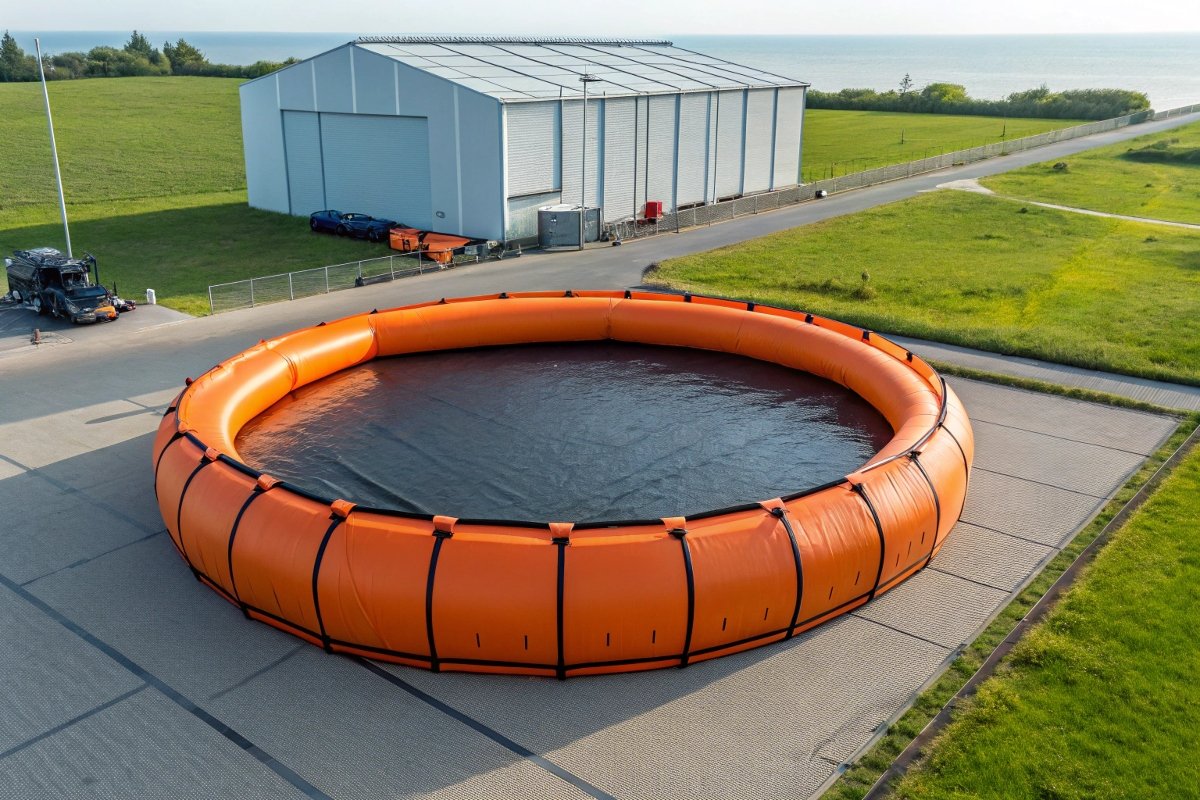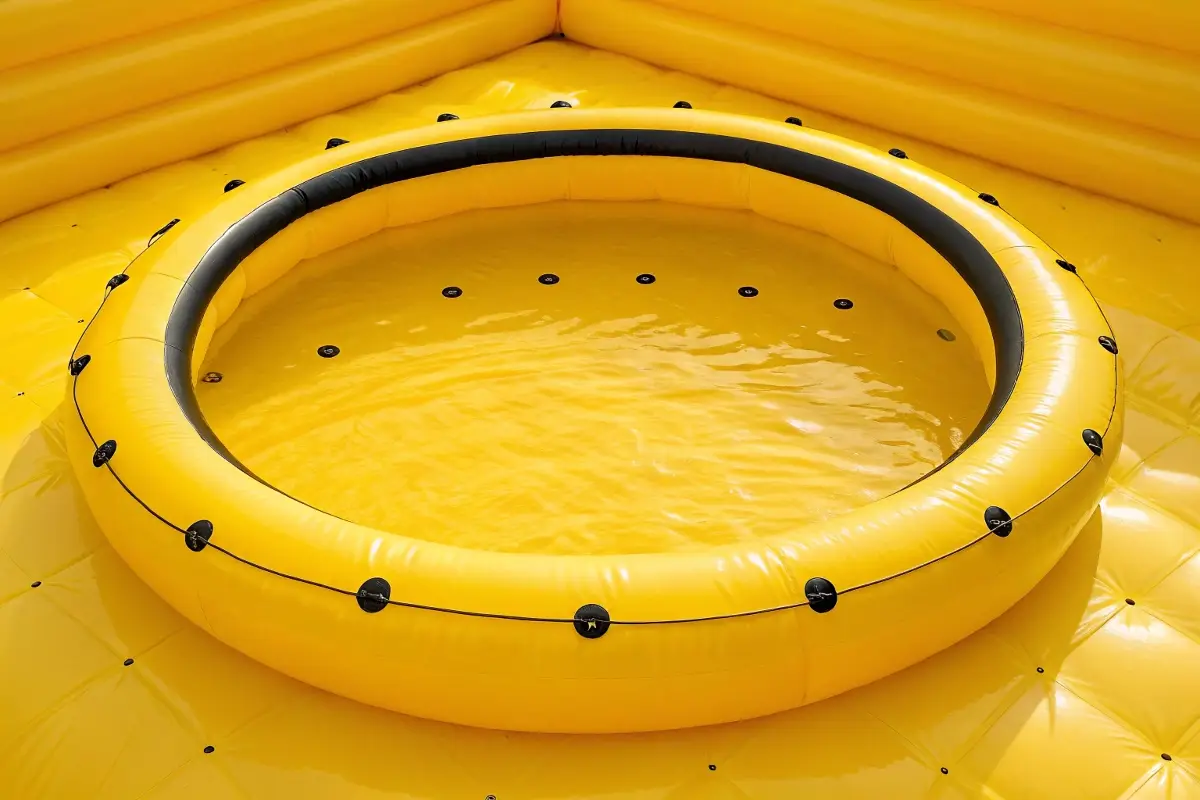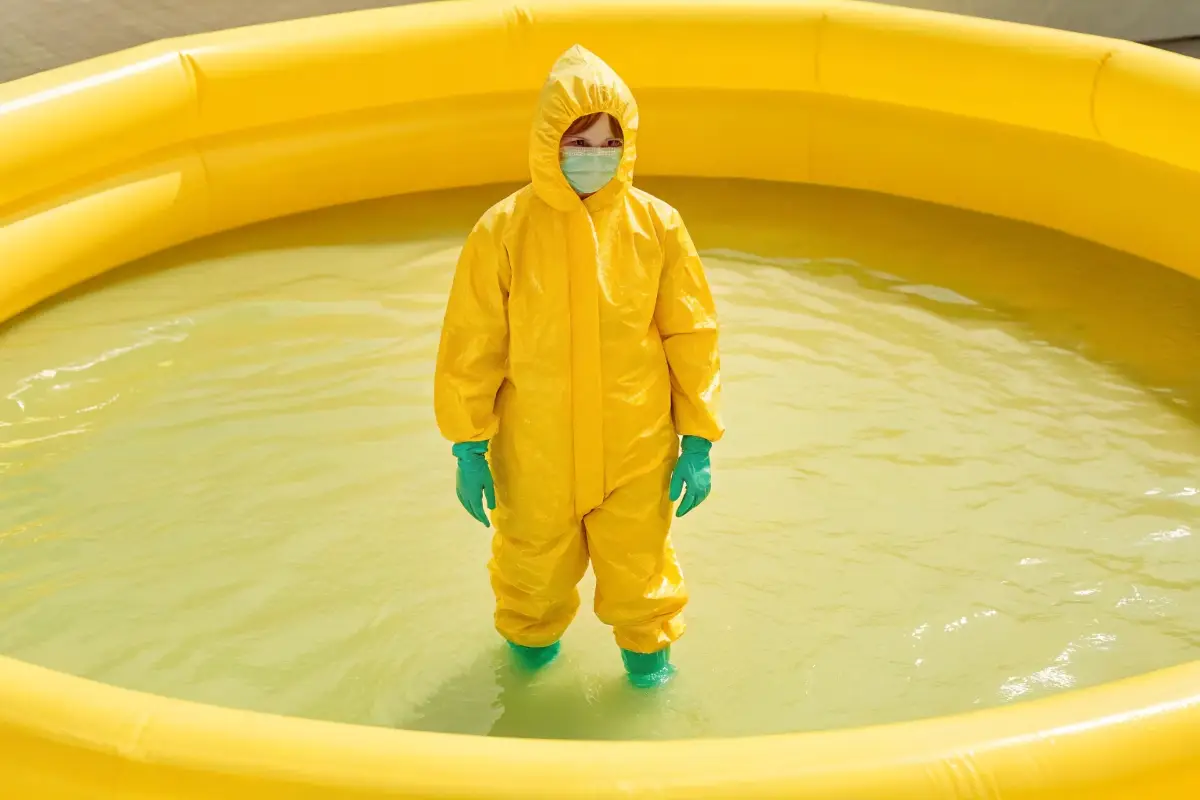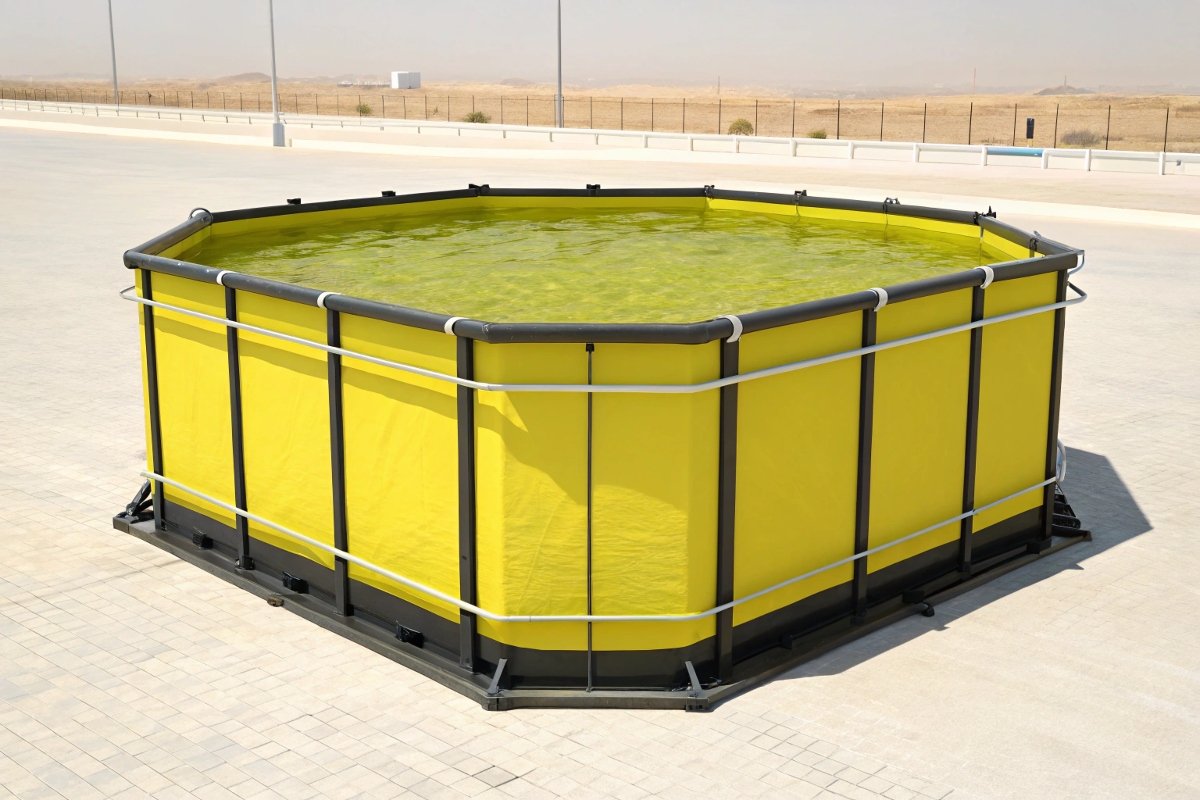Oil and chemical spills can bring your operations to a halt. They cause immediate dangers, costly cleanups, and big fines. Are you looking for a fast, reliable way to stop these spills from spreading and causing more damage? A spill pool offers a powerful solution for containing unexpected liquid releases.
A spill pool is a self-contained, portable device designed to provide immediate, temporary containment for spills of various liquids, including fuels, chemicals, and hazardous materials [1]. Unlike a rigid tray or a fixed berm [2], it can be quickly set up to form a large, flexible basin. This helps to prevent environmental contamination and protect workers.

From my experience in manufacturing and supplying spill control products, I have seen the critical need for quick-response solutions. People often confuse a spill pool with a swimming pool, but their purpose is entirely different. A spill pool is a strategic tool in environmental protection, representing how a small product can show great progress. Let’s look closer at these versatile devices.
What is Pop Up Pool Spill Containment?
Emergency spills demand quick action. Setting up traditional containment can be slow and difficult. Do you need a solution that can be deployed in seconds to tackle unexpected leaks? Pop Up Pool Spill Containment offers a rapid and effective response to liquid spills.
Pop Up Pool Spill Containment is a type of spill pool designed for extremely fast deployment. It typically features self-rising sidewalls that automatically go up when liquid enters the pool or when the bottom is pushed down [3]. This design allows for instant setup without manual inflation or assembly, making it ideal for urgent spill response situations in various locations.
When I first encountered pop up spill pools, I was impressed by their simple yet effective design. This is a game-changer for emergency spill response. Imagine a tanker truck leaking fuel or a ruptured chemical drum. Every second counts. Traditional containment methods might involve digging trenches or building temporary berms, which takes time. A pop up pool, however, springs into action instantly. Many models have sidewalls that are supported by rigid frames or internal springs, which allows them to raise as the liquid fills them. Or, they might have foam-filled edges that gently rise when deployed on a flat surface.
One of the greatest advantages I have personally witnessed is their portability and small storage footprint. When not in use, these pools can be folded down into a compact package, easily stored in a truck, an emergency response kit, or a small storage area. But when deployed, they can hold a significant volume of liquid, much more than a typical spill tray or a simple berm. This high capacity makes them suitable for larger spills where you need to contain a substantial amount of material quickly. For instance, I’ve seen fire departments and emergency teams use them for containing liquids from overturned vehicles or for temporary storage during salvage operations. This blend of rapid deployment and high containment capacity makes them an essential tool for effective spill control. It brings a new level of readiness to environmental safety.
| Feature | Pop Up Pool Spill Containment | Conventional Spill Tray / Berm |
|---|---|---|
| Deployment | Instant; self-rising sidewalls | Manual setup; often requires inflation or assembly |
| Portability | Very high; folds compactly | Can be portable, but often bulkier |
| Capacity | High; designed for larger spills | Lower; suitable for drips or smaller leaks |
| Setup Time | Seconds | Minutes, or even longer for complex berms |
| Use Case | Emergency spill response, temporary storage | Everyday containment under equipment |

What is the difference between a chemical spill pool, fuel spill pool, and hazmat spill pool?
Not all spills are the same. Using the wrong containment material can make a spill worse. Are you confused about which spill pool to use for different types of hazardous liquids? Understanding material compatibility is crucial for effective and safe spill response.
The primary difference between a chemical spill pool, a fuel spill pool, and a hazmat spill pool lies in the specialized material used for their construction to ensure chemical compatibility [4]. While "hazmat spill pool" is a broad term encompassing both, specific fuel and chemical pools are designed with materials like TPU or PVC coated fabrics that resist degradation from the particular liquids they are meant to contain.
This distinction is something I’ve spent years perfecting in my coated fabric factory. It goes beyond just making a pool that holds liquid. It is about making sure the pool material itself does not break down or react negatively with the spilled substance. For example, my insight tells me that many common spill pools are made of PVC coated fabric [5]. PVC is generally good for things like water, weak acids, and alcohols. It is also more cost-effective to produce. However, when it comes to fuels like gasoline or diesel, PVC is not always the best choice. It can swell, lose its strength, or become brittle over time [6].
This is why I strongly recommend spill pools made from TPU coated fabric [7] for fuels and oils. TPU, or Thermoplastic Polyurethane, has superior resistance to hydrocarbons found in gasoline, diesel, engine oil, and even aviation fuel. It maintains its mechanical strength and integrity better under exposure to these corrosive liquids. For instance, engine oil and lubricating oil require materials with high oil resistance and mechanical strength, which TPU offers. Jet fuel also benefits from TPU, though specific formulas for jet fuel may need further verification [8]. For polar solvents like alcohol or weak acids, PVC is suitable, and for strong acids, a more rigid PVC or other specialized polymers might be even better. A hazmat spill pool is a general term. It indicates a pool designed for "hazardous materials," implying broad chemical resistance. But in practice, you need to know the specific hazmat. Then you choose the fuel spill pool or chemical spill pool with the right material. This careful material selection is not just about product quality. It is about ensuring the safety of workers and the environment in critical moments.
| Spill Type | Typical Liquids Contained | Preferred Material (from experience) | Why |
|---|---|---|---|
| Fuel Spill Pool | Gasoline, Diesel, Engine Oil, Lubricating Oil, Jet Fuel | TPU Coated Fabric | High resistance to hydrocarbons; prevents swelling and material degradation. PVC not recommended. |
| Chemical Spill Pool | Acids (weak/strong), Alkalis, Solvents (polar) | PVC Coated Fabric (Rigid PVC for strong acids) | Good resistance to many chemicals; cost-effective for general chemical containment. |
| Hazmat Spill Pool | Broad range of hazardous substances | Highly resistant TPU or specialized polymers | Designed for versatility across different hazards; material choice depends on expected specific hazards. |

Where do you need a spill pool?
Having the right tool is one thing. Knowing where and when to use it is another. Are you unsure where a spill pool would be most effective in your operations? Identifying key risk areas ensures you are prepared for immediate spill containment.
Spill pools are essential for any location where liquids are stored, transported, or handled, especially in industries dealing with fuels, chemicals, or hazardous waste [9]. Common places include manufacturing facilities, construction sites, vehicle maintenance areas, chemical storage depots, emergency response vehicles, and field operations where temporary liquid containment is required.
In my work helping businesses with spill control, I always emphasize proactive placement of these tools. Their usefulness comes from their versatility and ease of deployment. Think about maintenance operations, for instance. When a piece of heavy machinery needs an oil change in the field, or a pump needs repair, there is always a risk of spills. A portable spill pool can be quickly placed underneath to catch any drips or leaks. This prevents soil contamination and keeps the work area clean and safe.
Another critical area is at transfer points. Loading or unloading liquids from tankers or drums always carries a risk of accidental overflow or ruptured hoses. Having a spill pool ready can contain these spills immediately. I have seen them deployed at construction sites where fuel is regularly dispensed to heavy equipment. They are also vital for emergency response teams. When a road accident involves a leaking vehicle, a pop-up spill pool can be deployed to control the spill until further cleanup can be done. For example, during my time establishing spill control products, I worked with many agents who found these invaluable for their clients, not just in factories but also for mobile service teams. The ability to store them compactly and then deploy them for substantial spills makes them much more useful than just a small tray. They can handle a significant volume of liquid. This gives responders more time and space to manage the situation safely. These pools truly embody the idea of environmental protection being integrated into everyday industrial practice.
| Application Area | Common Use Cases |
|---|---|
| Fleet Maintenance | Underneath vehicles during oil changes, fluid transfers, or engine repairs. |
| Construction Sites | Fueling heavy equipment, containing spills from hydraulic lines or generators. |
| Chemical Storage | Secondary containment for drums or containers during temporary storage or transfers. |
| Emergency Response | Containing spills from overturned vehicles, ruptured containers, or industrial accidents. |
| Field Operations | Portable containment for operations in remote areas, avoiding environmental damage. |
| Manufacturing Facilities | Around machinery, pumps, or dispensing stations susceptible to leaks. |

Conclusion
Spill pools are indispensable for handling accidental liquid releases. From their self-rising pop-up designs to specific material strengths for fuels and chemicals, they offer crucial protection. Using them correctly helps meet regulations and keeps our environments safe.
Annotated Readings
- Spill Pool: A flexible, portable basin or container used for temporary containment of leaked liquids, designed to prevent environmental contamination. Source: https://www.ehs.pitt.edu/workplace-safety/tools-and-resources/spill-control-and-prevention
- Spill Berm: A temporary or permanent barrier designed to contain or divert spills, often made of flexible materials for portability. Source: https://en.wikipedia.org/wiki/Spill_dam
- Self-Rising Sidewalls: A design feature in spill containment units where the walls automatically deploy or rise when liquid enters or pressure is applied to the base, enabling quick setup. Source: https://www.newpig.com/pop-up-pools/c/122
- Chemical Compatibility: The ability of a material to resist degradation or adverse reactions when exposed to specific chemicals. Source: https://en.wikipedia.org/wiki/Chemical_compatibility
- PVC Coated Fabric: A textile material coated with Polyvinyl Chloride, known for its water resistance and durability, commonly used in various industrial and outdoor applications. Source: https://en.wikipedia.org/wiki/Polyvinyl_chloride_fabric
- PVC Degradation: PVC can degrade or swell when exposed to certain solvents, oils, and fuels, leading to loss of mechanical properties and potential failure. Source: https://www.sciencedirect.com/topics/engineering/polyvinyl-chloride-degradation
- TPU Coated Fabric: A fabric coated with Thermoplastic Polyurethane, known for its excellent abrasion resistance, flexibility, and superior chemical resistance compared to PVC, especially against oils and fuels. Source: https://en.wikipedia.org/wiki/Thermoplastic_polyurethane
- Jet Fuel: A type of aviation fuel designed for use in aircraft powered by gas-turbine engines, requiring specialized material compatibility for storage and handling. Source: https://en.wikipedia.org/wiki/Jet_fuel
- Hazardous Waste: Waste materials that could pose a substantial or potential threat to public health or the environment when improperly handled, transported, stored, or disposed of. Source: https://www.epa.gov/hw/learn-basics-hazardous-waste
- Spill Response: The actions taken to control, contain, and clean up a spill of hazardous materials effectively and safely. Source: https://www.maritime.dot.gov/safety/response/oil-and-hazardous-substance-spill-response-plan-guidelines
- Environmental Contamination: The introduction of pollutants or toxins into natural environments, causing adverse effects on ecosystems and human health. Source: https://en.wikipedia.org/wiki/Environmental_pollution
- Chemical Spill: An accidental release of a hazardous chemical into the environment or workplace, requiring immediate containment and cleanup. Source: https://www.osha.gov/chemical-hazards
- Fuel Spill: An accidental release of flammable liquids like gasoline, diesel, or other petroleum products, often requiring specialized containment due to flammability risks. Source: https://www.epa.gov/enforcement/spill-prevention-control-and-countermeasure-spcc-rule
- Hazardous Materials (HAZMAT): Substances that can pose a danger to health, safety, or property during transport or storage. Source: https://en.wikipedia.org/wiki/Hazardous_material
- Containment Sump: A low point or reservoir designed to collect liquids, preventing them from spreading or reaching larger areas. Source: https://en.wikipedia.org/wiki/Sump
- Temporary Containment: The act of setting up structures or barriers to hold spills for a limited duration until permanent cleanup or transfer can occur. Source: https://www.grainger.com/know-how/safety/emergency-preparedness/spill-control/kh-spill-containment-211
- Material Swelling: The increase in volume of a material (like a polymer) due to the absorption of a liquid, which can lead to degradation of its physical properties. Source: https://www.sciencedirect.com/topics/materials-science/swelling
- Polar Solvents: Solvents with a high dielectric constant and dipole moment, capable of dissolving polar compounds, such as water, alcohols, or acids. Source: https://en.wikipedia.org/wiki/Solvent
- Environmental Protection: The practice of protecting the natural environment by individuals, organizations and governments. Source: https://en.wikipedia.org/wiki/Environmental_protection
- Spill Tray: A small, rigid or semi-rigid container used for collecting drips and minor leaks from containers, often used in workplaces for localized containment. Source: https://www.uline.com/BL_8562/Spill-Control-Trays
